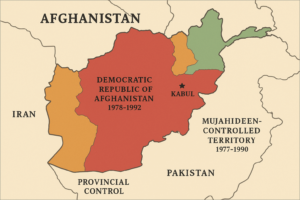Changing Politics in Afghanistan: An Unfinished Transition
Overview
Afghanistan has long been a crossroads of empires and ideologies, but its political landscape has undergone dramatic upheavals in the last two decades. From foreign interventions and fragile democratic experiments to the Taliban’s return in 2021, the country’s politics remain deeply unsettled. For CSS aspirants, understanding Afghanistan’s shifting dynamics is vital because of its direct impact on Pakistan, South Asia, and global security debates.
Notes
-
Afghanistan’s politics are shaped by tribal affiliations, religious identity, and external interventions.
-
Post-2001: A U.S.-backed democratic setup was introduced with elected governments, though plagued by corruption.
-
2021: Taliban regained control after the U.S. withdrawal, marking a political reset.
-
Current governance model: Taliban-led Islamic Emirate, rejecting Western democratic structures.
-
Women’s rights, press freedom, and education are central points of contention under Taliban rule.
-
Afghanistan’s politics are also influenced by regional players like Pakistan, Iran, China, India, and Russia.

Facts and Figures
-
Between 2004 and 2019, Afghanistan held four presidential elections, all marked by low turnout and allegations of fraud.
-
Only 20% of Afghan girls currently have access to secondary education (UNICEF 2023).
-
Afghanistan’s GDP fell by nearly 30% after the Taliban takeover in 2021 (World Bank).
-
Refugees: Over 2.8 million registered Afghan refugees live abroad, mostly in Pakistan and Iran (UNHCR).
-
Afghanistan remains the world’s largest producer of opium, accounting for more than 80% of global supply (UNODC).
-
Only 35% of Afghans have access to electricity, highlighting infrastructural challenges.
Relevance for CSS/Competitive Exams
-
Essay Paper: Changing regional politics, rise of Taliban, U.S. withdrawal.
-
Current Affairs: Human rights, education crisis, counterterrorism.
-
Pakistan Affairs: Afghan refugees, border management, security concerns.
-
International Relations: U.S.–China rivalry, Pakistan–Afghanistan ties, geopolitics of Central Asia.
Notes for Beginners
Think of Afghanistan’s politics as a pendulum swinging between foreign-backed governments and local power structures. Beginners should grasp:
-
Pre-2001: Taliban rule (strict Sharia, global isolation).
-
2001–2021: Democratic experiment with NATO support.
-
Post-2021: Return of Taliban; rejection of democracy.
A key question for students: Can Afghanistan achieve political stability without inclusive governance?
Conclusion
The politics of Afghanistan remain fluid and uncertain. While the Taliban hold power, international recognition, economic survival, and human rights issues continue to challenge their authority. For neighbors like Pakistan, the stakes are high: security, trade, and regional peace depend on how Afghanistan’s politics evolve in the coming years.

